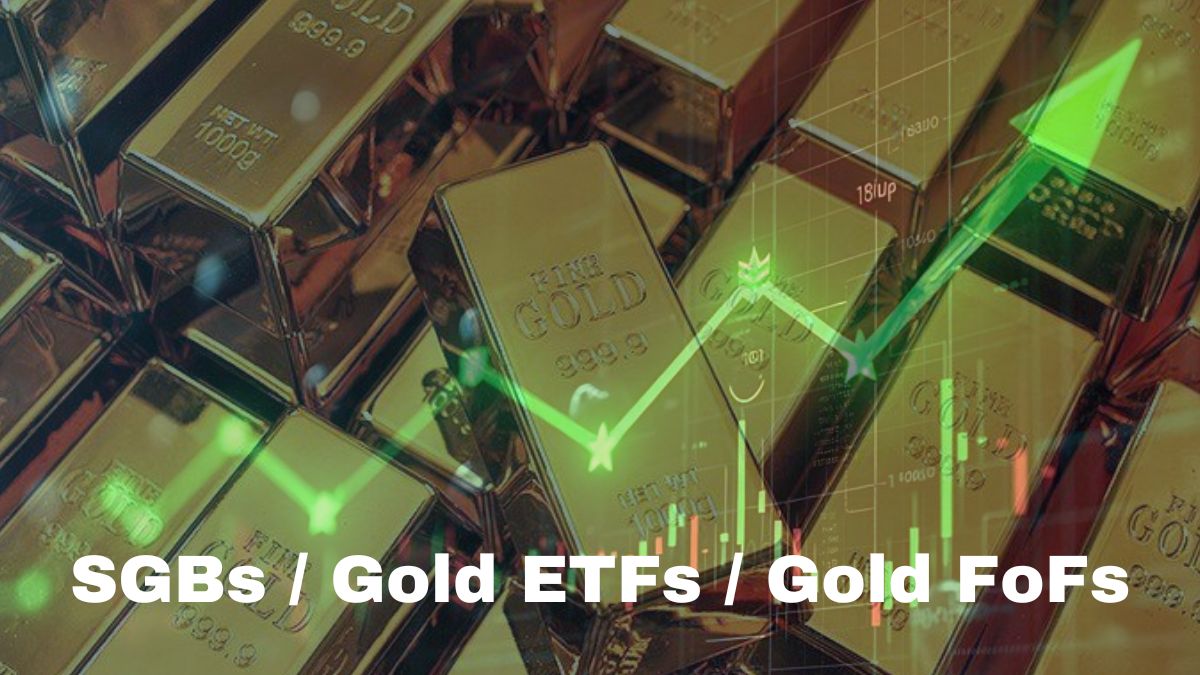With Dhanteras and Diwali approaching, gold remains a favored investment symbolizing wealth and prosperity. While traditional gold bars, coins, and jewelry are popular, there’s a growing interest in alternatives like Sovereign Gold Bonds (SGBs), gold ETFs, and gold FoFs.
Value Research identifies Sovereign Gold Bonds (SGBs) as a preferred investment for safety, tax-free maturity returns, and 2.5% annual yield above gold prices. However, with no new issuances, investors turn to stock exchanges to purchase these bonds. Increased festive demand is also expected to influence gold prices.
Experts advise caution when buying SGBs on the secondary market, as new issuances remain unavailable. Alternatives like Gold ETFs and Gold FoFs are gaining traction, allowing investors to indirectly hold gold through pooled investments securely stored and traded on stock exchanges.
Investors Turn To Gold ETFs And Gold FoFs Amid Stalled SGB Issuance
With no new Sovereign Gold Bond (SGB) tranches, investors increasingly turn to Gold ETFs and Gold FoFs as alternatives. Gold ETFs act as mutual funds that purchase and securely store physical gold, allowing investors to buy units on stock exchanges, effectively owning a share of the fund’s gold reserves. This provides a convenient, regulated way to invest in gold without handling the metal directly.
Choosing Between Gold ETFs and Gold Funds of Funds: What Investors Should Know
Overview of Investment Options
Investors in gold have two primary choices: Gold Exchange-Traded Funds (ETFs) and Gold Funds of Funds (FoFs). Gold ETFs are ideal for those with a demat account who seek to make occasional investments. FoFs, which operate like traditional mutual funds, allow for systematic investment plans (SIPs) and are suitable for regular investors without a demat account.
Performance Insights
Currently, 17 Gold ETF schemes are available, with average one-year returns of around 29.12%. Over three years, the returns average 16.93%, and for five years, 13.59%. Notably, LIC MF Gold ETF leads with the highest returns: 29.97% for one year, 17.47% for three years, and 13.87% for five years.
New Market Entrants
Zerodha Mutual Fund has launched the Zerodha Gold ETF FoF, which primarily invests in Gold ETFs, expanding options for investors looking for indirect gold exposure.
Market Trends
According to Ashwini Kumar, Senior Vice President at ICRA Analytics, investors prefer Gold ETFs for their liquidity, transparency, and cost-effectiveness, especially as expectations grow for an interest rate cut by the US Federal Reserve.
Redemption and Costs
Gold ETFs allow easier redemption during trading hours, unlike gold mutual funds, which require end-of-day transactions. However, investing in FoFs may be more costly due to double-layered fees associated with fund management and the underlying ETFs.













